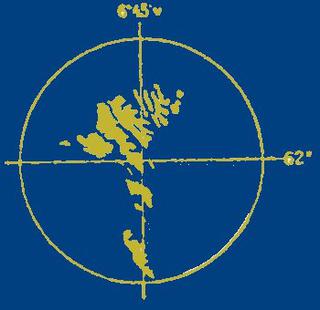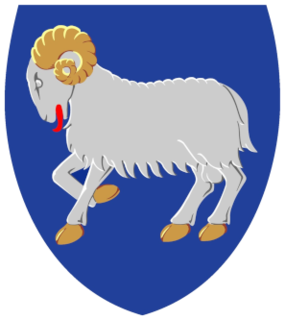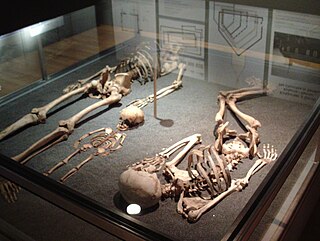 W
WThe culture of the Faroe Islands has its roots in the Nordic culture. The Faroe Islands were long isolated from the main cultural phases and movements that swept across parts of Europe. This means that they have maintained a great part of their traditional culture. The language spoken is Faroese. It is one of three insular Scandinavian languages descended from the Old Norse language spoken in Scandinavia in the Viking Age, the others being Icelandic and the extinct Norn, which is thought to have been mutually intelligible with Faroese. Until the 15th century, Faroese had a similar orthography to Icelandic and Norwegian, but after the Reformation in 1538, the ruling Danes outlawed its use in schools, churches and official documents. This maintained a rich spoken tradition, but for 300 years the language was not written down. This means that all poems and stories were handed down orally. These works were split into the following divisions: sagnir (historical), ævintyr (stories) and kvæði. These were eventually written down in the 19th century mostly by Danish scholars.
 W
WThe Faroese chain dance is the national circle dance of the Faroe Islands, accompanied by kvæði, the Faroese ballads.
 W
WThe Faroe pony, Faeroes pony, or Faroese horse, is a small pony, with a height between 11.1 to 12.1 hands. Technically this animal is a pony due to its height, but in the Faroe Islands it is called a horse because of its strength. The Faroe pony is only to be seen on the Faroe Islands and is therefore little known in other countries. There are only 94 Faroe ponies left living on the Faroe Islands.
 W
WFaroese art is art by artists living in the Faroe Islands and art by Faroese nationals living abroad. In the Faroe Islands, art is an important part of everyday life and in the public debate. It may be the special light in the Faroes which causes so many to express themselves in painting. The ever-changing Faroese weather and light provide opportunities for endless nuances, something which has fascinated both foreign and local artists over the years. However, the history of Faroese art is short, and can only be dated a couple of hundred years back. Lack of time, light and materiel may have caused the late appearance of painting. But despite this, the islands have a very active art scene. A great many of the Faroese artists of today resent being reminded that Faroese art is a comparatively recent phenomenon. They find such an observation annoying as regards their artistic work, and they claim that such a statement has no bearing whatsoever on them as artists as their frame of reference is both local and global.
 W
WThe Faroese Scientific Society, was founded in 1952 with the object of promoting co-operation in all fields of learning, collecting scientific literature, and publishing the results of research on or carried out in the Faroe Islands. A yearly periodical, Fróðskaparrit, came to be published annually. It was through the work of the society that the University of the Faroe Islands came to be founded.
 W
WA Faroese shawl is a traditional piece of clothing from the Faroe Islands. The most distinguishing characteristic of Faroese shawls is the center back gusset shaping. Each shawl consists of two triangular side panels, a trapezoid-shaped back gusset, an edge treatment, and usually shoulder shaping. The shoulder shaping allows these shawls to drape over the shoulders and remain in place as the wearer moves, even if the shawl is not pinned in place.
 W
WListasavn Føroya is an art museum in Tórshavn, Faroe Islands for mostly permanent exhibits of Faroese arts.
 W
WMinistry of Education, Research and Culture in the Faroe Islands is responsible for education, research and culture in the Faroe Islands. The Ministry is also responsible for the pedagogical part of the day care, the ecclesiastical affairs and other, the Radio and TV broadcasting and sports.
 W
WThe National Museum of the Faroe Islands is the national museum of the Faroe Islands, located in Tórshavn.
 W
WThe Nordic House is a cultural institution in the Faroe Islands. Its aim is to support and promote Nordic and Faroese culture, locally and in the Nordic region.
 W
WNorth Atlantic House is a cultural centre located on the harbour front in Copenhagen, Denmark, dedicated to preserve, promote and communicate culture and art from the North Atlantic area. It is made as a cooperation between Denmark, Iceland, Greenland and the Faroe Islands and includes three galleries and conference facilities. The centre also houses the Icelandic embassy and the permanent representations of Greenland and the Faroe Islands, as well as some commercial activities and enterprises related to the area.
 W
WÓlavsøka is the biggest summer festival in the Faroe Islands, and by most Faroese considered as the national holiday of the Faroes along with Flag Day on 25 April. Ólavsøka is celebrated for several days, but the day itself is on 29 July. It is the day when the Faroese Parliament (Løgting) opens its session.
 W
WOlsok is a national day of celebration on July 29 in the Nordic countries of Norway and the Faroe Islands, and also in the provinces of Härjedalen in Sweden and Savonlinna in Finland.
 W
WStýrivolt [] or Stýrvolt is an old Scandinavian card game, that appears to be extinct today except on the Faroe Islands.
 W
WWhaling in the Faroe Islands, or Grindadráp, is a type of drive hunting that involves herding whales and dolphins into shallow bays to be beached, killed and butchered. The practice dates back to the 9th century and many Faroese consider eating whales to be an important part of their history. The practice has been subjected to increasing scrutiny since the 1980s, when concerns arose over the potential toxicity of whale meat. Animal rights groups have also labelled it cruel and unnecessary.